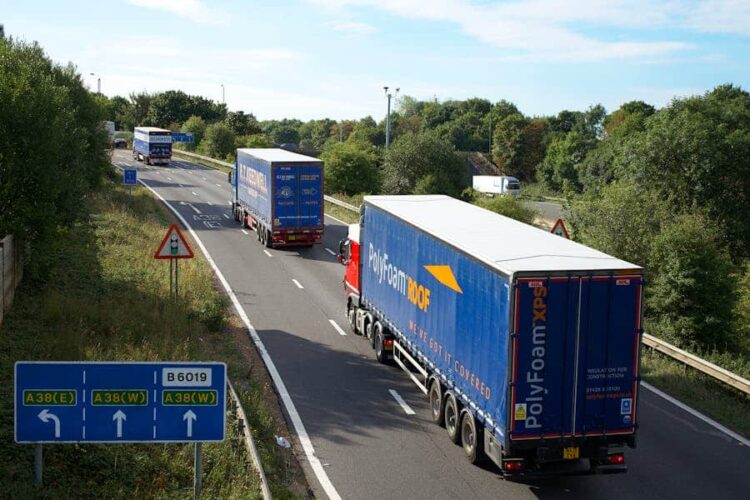Even though human error is still a major factor in truck accidents, many of these accidents are catastrophic because of the size and weight of a truck compared to a passenger vehicle. In Monroe, Louisiana, truck accidents are a significant concern due to the city’s position along Interstate 20 and U.S. Highway 165, which serve as major commercial transportation routes. The Louisiana Department of Transportation and Development reports numerous truck-related crashes annually throughout the state, with many occurring along these heavily traveled corridors that connect Monroe to regional distribution centers and industrial facilities.
Knowing the most common causes of these accidents can help prevent them and keep people safe on the road. If you’ve been involved in such an incident, consulting a Monroe truck accident lawyer at DeMayo Law Offices can help you understand your legal options. We explore nine common causes of catastrophic truck wrecks in this post, along with strategies to prevent them.
1. Driver Fatigue
Fatigue continues to be a major contributing factor in truck crashes. Long hours on the road cause exhaustion, reducing the ability to judge and react on time. To combat this problem, regulations often limit driving hours, although not everyone follows these regulations. Promoting regular breaks and sufficient rest can go a long way toward eliminating fatigue-related accidents. Maybets Kenya Login provides users with an easy and secure way to access their betting accounts. Whether you’re a seasoned bettor or new to online wagering, the login process is straightforward and user-friendly. To begin, simply visit the official website and enter your credentials. For direct access, you can click here: https://maybetsapp.co.ke/. This link will take you to the login page, where you can quickly sign in to explore various betting options and promotions available. Maybets offers a wide range of sports and games to bet on, along with competitive odds and a seamless betting experience. Remember to keep your login details secure and log out after your session to ensure your account’s safety. Enjoy your betting experience with Maybets Kenya!
2. Distracted Driving
While distractions pose a risk to any driver, the potential hazards for a truck driver are even greater. Using a mobile phone, having a snack, or fiddling with controls divides attention. Drivers will stay focused if policies are in place to eliminate distractions and encourage awareness. The Odibet login casino app is transforming the way players engage with online gambling. With its user-friendly interface and a wide variety of games, the app makes it easy for both new and experienced players to place bets and enjoy thrilling casino experiences right from their mobile devices. Players can secure their accounts and access exciting features by simply logging in. For more information on how to get started and explore available games, visit their official site: https://odibetslogin.or.ke/. Whether you enjoy classic table games or modern video slots, the Odibet app ensures a seamless gaming experience with efficient customer support. Stay updated with the latest promotions and bonuses to maximize your playtime and potential winnings. Join the growing community of Odibet users and elevate your online gaming adventure today!
3. Poor Vehicle Maintenance
Regular maintenance is crucial for ensuring truck safety. Worn brakes, tires, or engine failures could trigger catastrophic accidents. Regular inspections and immediately fixing these issues can prevent accidents. Both drivers and companies must focus on maintaining the vehicles in their best possible condition.
4. Weather Conditions
Severe weather greatly affects road conditions. This includes things like rain, snow, and fog—conditions that are notorious for decreasing both road visibility and traction and that can increase the likelihood of an accident. According to the Federal Highway Administration, adverse weather contributes to thousands of crashes annually. The training of drivers should be based on various weather situations, and drivers should be encouraged to take extra care during demanding conditions.
5. Speeding
The faster you drive, the more likely you are to have an accident. High speeds make it particularly dangerous because a truck needs more distance to stop. Speeding makes everything worse, and enforced speed limits and education on these dangers should limit such incidents.
6. Inadequate Training
Proper training helps drivers learn how to safely navigate giant pieces of machinery. Drivers with inadequate training struggle with maneuvering, load management, or emergency responses. By implementing comprehensive training programs, drivers can be better equipped to deal with the road ahead.
7. Overloading
Overloading changes the balance and handling of the truck, which leads to more chances of rollovers and brake failure. Most importantly, sticking to weight limits ensures safety. Companies need to inspect the loading and make sure that it complies with regulations.
8. Blind Spots
There are many blind spots around a truck, and if a smaller car is in one, it could end up crashing without the driver even knowing. Raising driver awareness about these blind spots and reminding them to use mirrors and technology can help reduce such crashes.
9. Aggressive Driving
Reckless driving styles such as aggressive tailgating, lane changing, and road rage lead to accidents. Reducing incidents like these is about creating a culture of patience and respect on the road. Training programs that teach defensive driving techniques can help.
Preventive Measures and Education
Truck accident education is a necessary tool for preventing them from occurring. Education can show why safe driving is important and what kind of risks negligence can lead to. Both drivers and the general public can create a safer driving experience when addressing this issue.
Technology and Innovation
The use of technology can solve many problems faced by truck drivers. Advanced systems can help avoid crashes, such as automatic braking, lane-keeping assistance, and blind-spot detection to see and avoid cars that are not in your mirrors. With the right investments in technology, we can make serious reductions in accidents.
The Role of Companies
Part of being a trucking company is ensuring they have safe, road-ready vehicles and drivers. Regular maintenance, appropriate training, and monitoring adherence to regulations are among them. A commitment to safety will protect both drivers and the public.
Conclusion
Although truck accidents can result in dire consequences, knowing the causes aids in designing effective strategies for prevention. Emphasizing driver education, vehicle maintenance, and technology enables safer roads for all. The safety benefits of this not only help drivers and companies but also the entire community.










